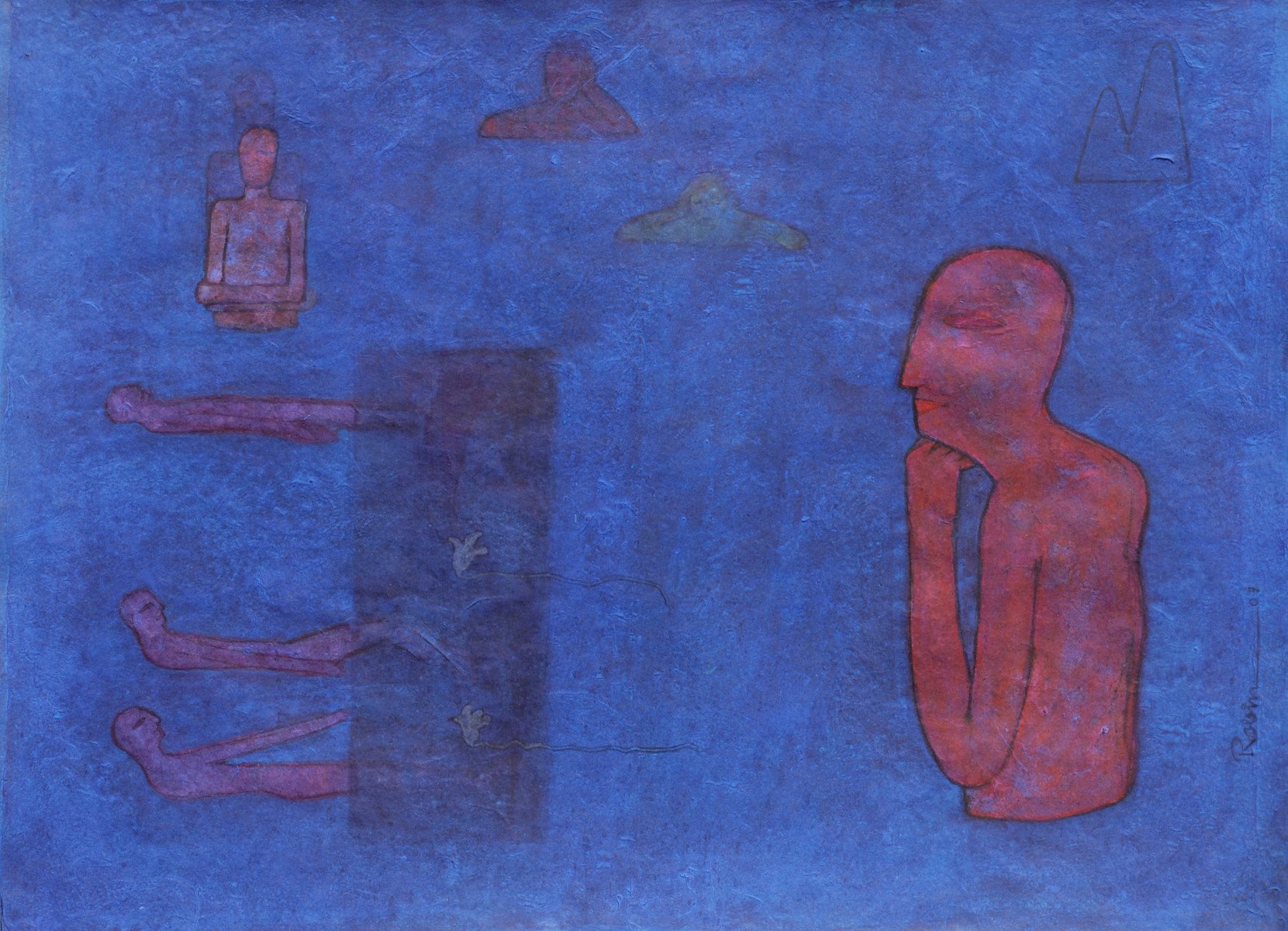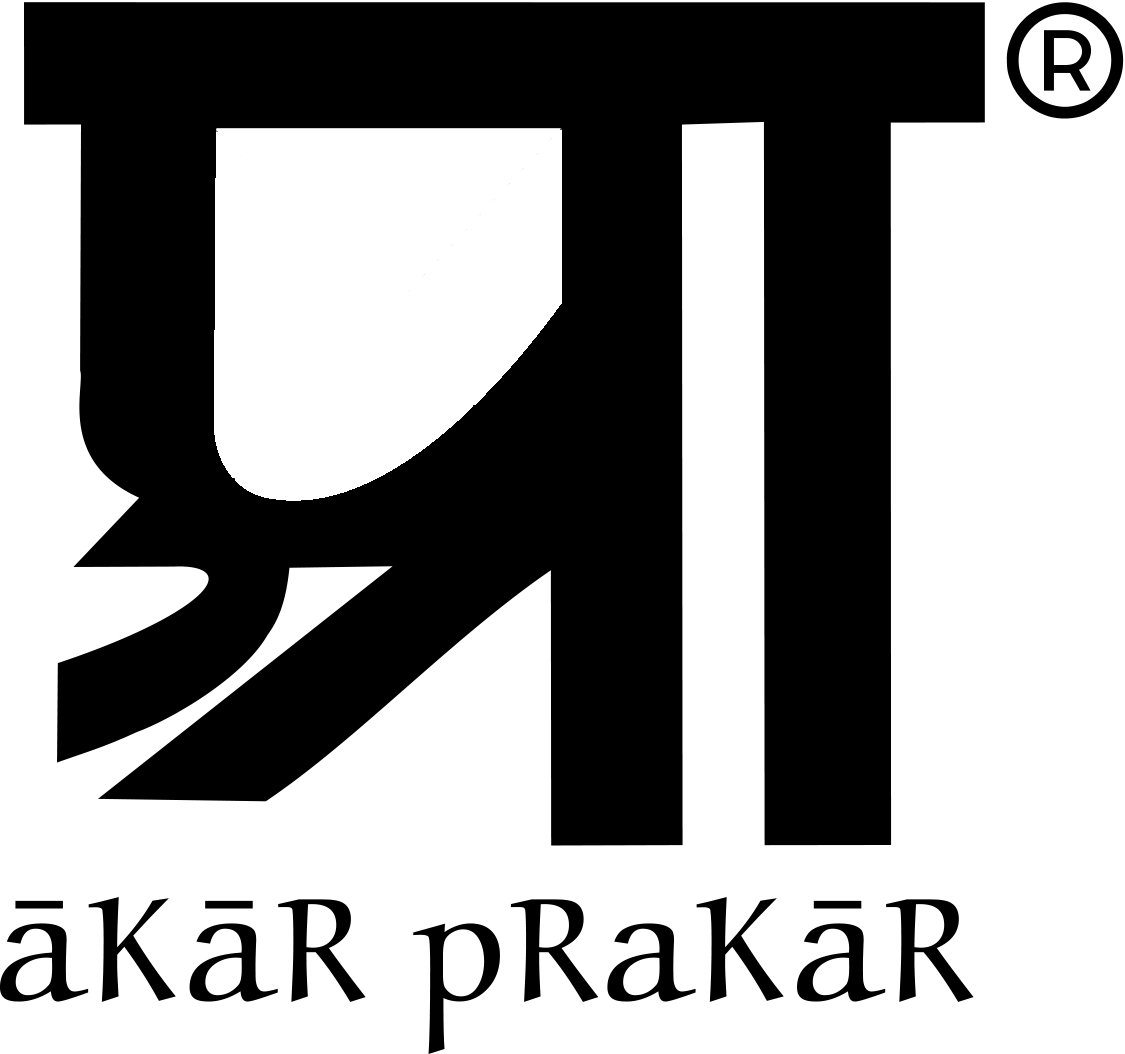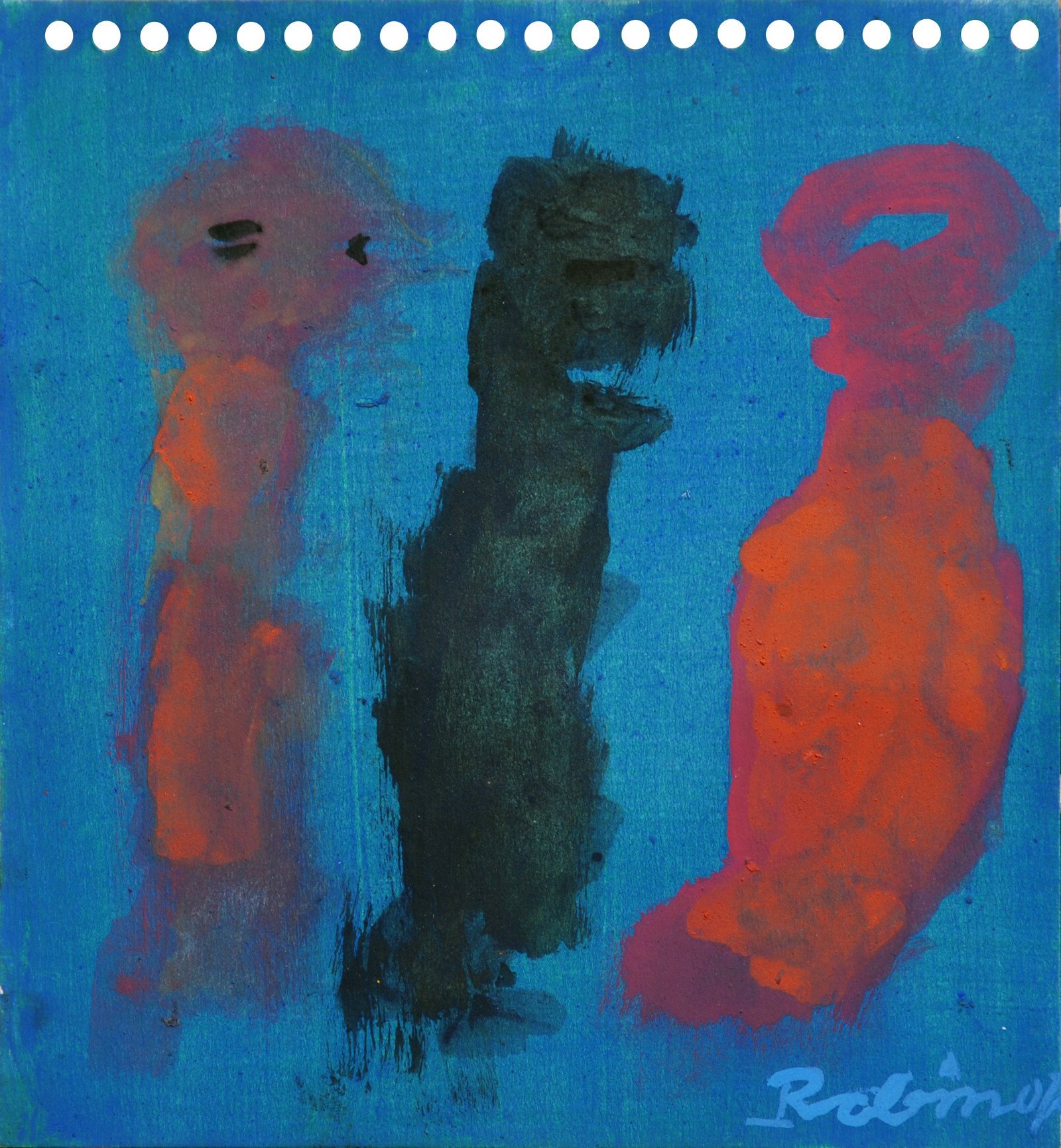
Rabin Roy
November
Painting is an art of creating space, obviously, two-dimensional space.
Generally painting is said to be a kind of non-temporal art. But there can be no art without some sort of temporal involvement. So in painting space is devised in such a way that it gets resurrected into a temporal vibration. Here lies the crux of the art of painting. The static condition of the frozen time is transmuted into kinetic reverberations, into a flow. Very often this benumbed static silence is highlighted through the treatment of space. Space is converted into pulsating time. An omnipotent silence reigns. In this concentrated silence space and time are united together. Each creates the other. This process of dual transmutation builds up an undefined third element representing the aesthetic philosophy of the artist. It may be sarcastic, rebellious or meditative, depending on the attitude or world out look of the artist.
The paintings of Rabin Roy (born: 1974) convey a spatial reverberation like this. He creates a very unique space, mysterious in nature. Through this space he posits a melancholic silence. This silence is omnipotent. Reverberates in concentrated energy. It contains the essential elements of the feelings of his personal ‘void’. Gradually this ‘personal’ gets transcended to engulf the greater world, greater reality. Spatial treatment is thus converted into temporal statement. In his paintings various forms of life are generated in that space. These grotesque figures grow very surreptitiously. Flow very discreetly. As if they are separate, isolated entity, inhabitants of unconnected distant shores. The void generated out of the space makes these protagonist figures of his paintings very slim, emaciated as if by injecting the same ‘void’ into their existence. The void is transmuted from primitive heritage, and through personal commitment it gets connected to the contemporaneity. The space and time are thus resurrected into a unified field through these minimal exposures of life. The personal is made universal.
Rabin completed his graduation in visual arts from Government College of Art and Craft, Calcutta in 1997. Started public viewing of his paintings since then. He visited Germany in 2000 and made first solo exhibition at Temline Kunstverein of Germany in 2001. He has come up and established himself in modern art scenario of India during later part of 1990-s.
The mode of modernity in Indian art generated during the decade of 1990-s has some special feature different from those of the previous decades. There was a very important shift of paradigm in attitude to ‘form’. The formal paradigm created by the artists of the 1960-s continued till the decade of 1980-s. The economic globalization and other forms of social changes brought about significant shifts in formal attitude of the younger generation of painters who came to the field during 1990-s.
Rabin’s paintings show all the characteristics of this new mode. He is very original in his expression, unique in formal attitude and different from the ongoing trends. His inner psychic stance formed by the time and reality around him has induced him to delve deeper into a grotesque silence, which is a special characteristic of primitive art. The benumbed silence and often a kind of pungent humour in his paintings may remind us of the uncanny, mysterious stillness observed in the works of Italian futurist Giorgio de Chirico, surrealist like Paul Delvaux, Giacometti, abstractionists like Mark Rothko, Philip Guston and some lyrical benign humbleness of Paul Klee. The ‘creative circuit’ that connects these modernists with the primitive mode generated by the childhood or prehistory of our civilization might have consciously or unconsciously induced Rabin Roy to build his own language and attitude. But his very original feelings, consciousness and emotions about life have transformed all these sources into a very original and unique ‘form’ of his own.
In this second solo of his recent paintings presented by Akar Prakar, Kolkata, there are tempera on large canvases pasted with Nepali hand made paper. He creates an enigmatic space of various hues, crimson lake or cadmium red, sap green or viridian green, lemon or orange yellow and such other shade through multiple layers chromatic exposures. In this meditative harmonious space mysteriously grotesque figures appear. Through their minimal existence and tensions between each other they posit their intrinsic tragic consciousness, pain or pleasure. Abstracting the real through expressionist transmutation is the primary mode of his expressions in temperas on paper, gauche or transparent watercolours also. There often the expanse of space minimises, the grotesqueness of the figures appears in primary role. In still life paintings the mysteriousness of the objects reverberates into an aesthetic life. This grotesque mystery of the existence arising out of the transcendental meditative space is the essence of his visual expressions.
Mrinal Ghosh






























